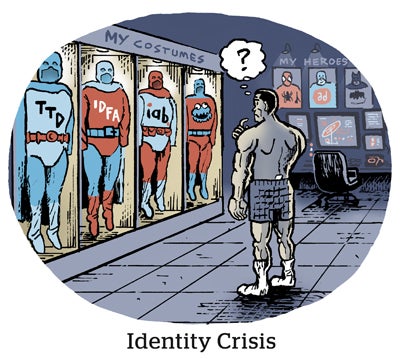TV ad measurement may still be a mess, but identity can help bring some order to the chaos.
The cornerstone of TV measurement is viewership data, said Benjamin Vandegrift, VP of measurement solutions and innovations at the Video Advertising Bureau (VAB), speaking at the IAB Tech Lab’s advanced TV summit in New York City last week.
Part of the problem is that viewing data comes from walled gardens that aren’t inclined to share. Programmers keep their audience data under lock and key, while smart TV manufacturers maintain tiny empires of automatic content recognition (ACR) data that don’t talk to each other.
The result? Data fragmentation and marketer frustration.
But identity is the “connective tissue” that can help buyers and sellers make sense of scattered viewing data, Vandegrift said.
Easier said than done, though, as signal loss complicates the identity-to-measurement pipeline for TV marketers.
Identifying the hurdles
Specifically, privacy clampdowns and regulatory scrutiny is making some identity data harder to obtain.
Third-party cookie deprecation is on the horizon in Chrome. Apple already restricts the use of mobile ad IDs through its AppTrackingTransparency framework on mobile. And, now, IP addresses are joining the list of data points under the privacy microscope because they could reveal the identity of an end user.
Meanwhile, multiple US state laws categorize data about racial or ethnic origin as sensitive information. Virginia, Colorado and Connecticut all require companies to get opt-in consent before processing this data.
As soon as Virginia’s privacy law went into effect at the beginning of the year, for example, some data brokers stopped passing any race-related information about users in the state, said Josh Chasin, chief measurability officer at VideoAmp, also speaking at the event.
As a result, it’s getting even harder for marketers to accurately reach and measure multicultural audiences, especially those with a primary language other than English.
Buyers need a variety of reliable identity sources to help fill in the gaps, Chasin said. And despite the challenges, there are still ways for advertisers to access enough identity data to help them effectively target and measure their campaigns.
Smoother sailing
Many data providers have audience graphs with enough information to extrapolate when certain data points are missing or inaccurate.
Experian, for instance, has hashed emails, IP addresses, cookies and mobile ad IDs in its graph, so if one of those signals goes away, it should still be able to identify a particular user. But IP addresses, cookies and mobile ad IDs are all under threat, which is why brokers update their identity graphs very frequently for a better chance of finding the same users that advertisers are looking for when they match their own first-party data with data from a third party.
Clean room technology is helping make this level of data matching possible, which explains why so many programmers are investing in clean rooms of their own.
TV ad personalization is a “trend,” the VAB’s Vandegrift said. “A lot of marketers want personalized campaigns to reach individuals.”
Of course, it’s nearly impossible to know for certain who within a household saw a TV ad. But with enough data about individual viewers and their TV viewing habits, advertisers can get pretty close.
The more data TV marketers have access to, Vandegrift said, the more likely those buyers can target and measure their desired audiences, even in the face of impending signal loss.
Case in point: the partnership announced last week between programmatic CTV tech platform Strategus and identity provider Intent IQ to help advertisers retarget individual CTV viewers on their mobile devices. Apple’s AppTrackingTransparency may have thrown a wrench in CTV-to-mobile retargeting, but tapping new sources of identity data can enable a new way to target mobile users based on the TV ads playing in their household.














